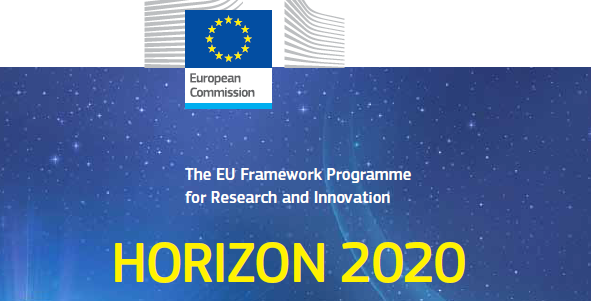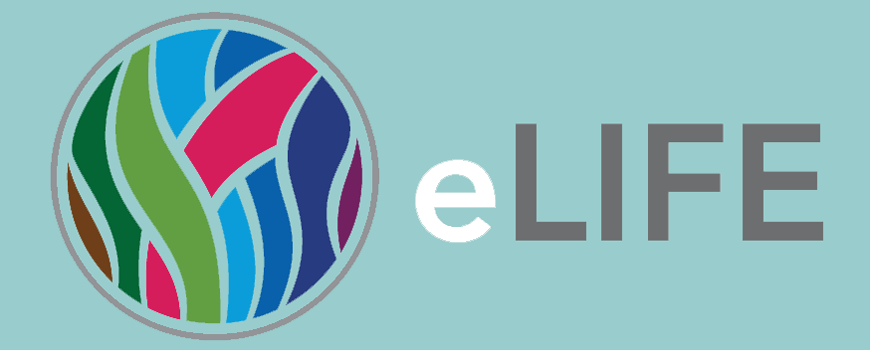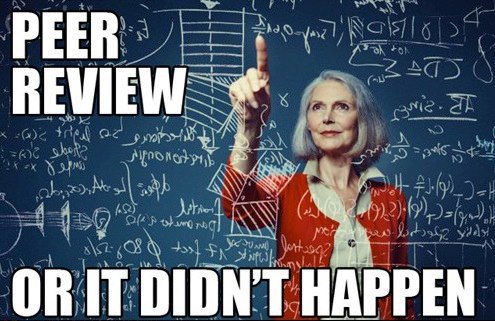
Open and Post Peer Review: New Trends in Open Access Publications
The quality of scientific publications will benefit from a revolution in the peer review models.
The peer review system was created in the 20th century as a means to ensure the quality and integrity of scientific research. Until recently, peer review mostly took place before articles have been published, relying on ‘single blind’ and ‘double blind’ processes. ‘Single blind’ refers to a review system where reviewers remain anonymous to the authors. In the ‘double-blind’ review, both the authors and the reviewers are anonymous to each other. The two models are meant to limit the degree of bias in reviewing processes.
Though it has played a pivotal role in improving the quality of scientific articles, the traditional peer review system has fallen under criticism. Among the academic community, there a growing feeling that traditional peer review is failing at accomplishing its core objective: ensuring scientific quality. With the traditional peer review system, transparency is limited by the fact that the reviewers’ comments are not made public. Besides, the criteria by which scientific articles are accepted or rejected can be rather blurry sometimes. These challenges have forced publishers and researches to look for alternative approaches of reviewing scientific articles.
Open peer review
The whole idea behind open peer review is to achieve a high level of transparency in scientific publications. This approach requires that both the manuscripts, the reviewers’ names and comments and the authors’ response are made available for public scrutiny. Here, authors see who reviewed their work. It also limits reviewers’ bias (which often leads to the acceptance or rejection of an article based on non-scientific grounds) while helping them get due credit for their work. Moreover, the reviewers’ comments released with the manuscript might provide additional and useful information for the readers.
Post peer review
Post peer-review happens after unreviewed articles are published or put online. The objective is to replace or improve pre-publication peer review with post publication comments and critics.
Post review may take three shapes. In the first case, reviewers are formally invited by editors to review the article once it has been published. F1000Research and Copernicus are two major journals pursuing this approach. In the second case, practiced by publishers such as Science Open and The Winnower, unreviewed articles are analyzed by volunteers. Lastly, in the third approach, independent peer reviewers revise papers on third party websites. PubPeer and PubMed Commons are two platforms dedicated to post peer review. Research shows that most online comments about unreviewed articles are negative. To balance over criticism, PubPeer moderates comments whereas PubMed Commons allows only registered users to comment.
All things considered, post peer review makes publishing fast and transparent. Nonetheless, the model has its own flaws. One of the major issues is that voluntary reviewers may not have the required skills to critically judge a scientific work. In addition, some journals might not receive reviews and discussions are fragmented. Another challenge of post review, which is often overlooked by many experts, is the reliability of papers which are not yet reviewed for citation.
Read more

Simba report has revealed that Open Access book publishing has a bright future and its market share is growing steadily. According to the report released by Simba, industry analysis and forecast company, through the year 2016 – 2020 Open Access book publishing will see an annual revenue growth of 30%.
So far scientific, technical and medical (STM) fields play major role in terms of publishing Open Access books. Currently, the revenue that Open Access books generate is a small fraction of what non-open access books produce. Open Access books also represent few titles per thousand published scholarly and academic books every year. However, Open Access books have taken hold in the humanities and social sciences. Besides, it is growing in countries outside the leading global scholarly publishing, Simba report shows.
Publishing Open Access book is very costly endeavor when compared to publishing journals articles. Article Processing Charge (APC), the model widely used for publishing journals articles, is less suitable for Open Access book publishing. So far university presses used various models to publish open access books. Institutional, crowd sourcing and non-traditional library budgets are the most widely used sources of funding to publish Open Access books.
According to the DOAB, November 2016 compilation, there are 5,468 Open Access books (free to read and free to share) from 164 publishers. The leading Open Access Books publishers include De Gruyter, Knowledge Unlatched, Springer Nature, Brill, SciELO, Frontiers Media, InTechOpen and Bookboon. The number of Open Access books and publishers joining the industry are expected to increase.
As indicated above, so far few Open Access books are published per year. Nonetheless, increasing number of titles per year and coupled with high Open Access books publishing cost might bring enormous challenges to the sustainability of these models. Source

The European Parliament (EP) has renewed its commitment for research and innovation by refusing to proposed budget cut. The EU 2017 approved budget favors research and innovation.
Initial proposed budget cut (including from Horizon2020) has sent disturbing signals out of the European Commission. But the EP through its bold measure and commitment for research and innovation has manged to rescue strategic programs such as Horizon 2020. Scholarly communities have taken sign of relief after the EP reversed what has been proposed.
Moving beyond what has been proposed by the EC, the Parliament increased funds for essential programs such as Marie Curie, ERC (European Research Council) and Erasmus+. For these programs extra 400 million has been apportioned. Source

ELife open-access journal to start charging fees
By Declan Butler| The open-access journal eLife is dropping one of its most distinctive features: free publishing. From 2017, it will charge a fee of $2,500 for all accepted papers.
Most open-access journals already charge for publishing, because they have few other ways to bring in cash. But eLife, which launched in 2012, has until now had its expenses covered by grants from three of the world’s largest private research funders: the Howard Hughes Medical Institute in Chevy Chase, Maryland; the Wellcome Trust in London; and the Max Planck Society in Berlin.
These backers want to create an elite online journal that can compete for authors’ best papers against leading subscription publications (such as Nature, Science and Cell), yet still be open access. The three funders set up the non-profit eLife organization, and have committed to provide it with £43 million ($56 million) over 10 years.
The journal now needs another revenue stream to put its publishing business on a more sustainable footing as the number of papers that it receives increases, says its executive director Mark Patterson, in Cambridge, UK. ButeLife will still rely heavily on its grants, he says. By charging some fees, eLife will be able to scale up its publishing operations and free up grant money to develop open-source tools for the research community. “Publishing science is a core activity, but it’s not all that we do,” he says.
The journal’s decision to start charging might mean that it loses some prospective authors, notes Kent Anderson, the former publisher of Science and now chief executive of the analytics firm RedLink in Westborough, Massachusetts. But Nick Golding, an epidemiologist at the University of Melbourne in Australia, says the new charge won’t put him off submitting manuscripts to eLife, which has published five of his articles since 2014. “Of all the journals I’ve published with, eLife has impressed me the most. It’s often difficult to find open access fees, but eLife is one journal I’d be very happy to pay for,” he says.
Pick a fee, any fee
Open-access journals charge a wide variety of fees — a range that has sparked fierce debate over how much scientists should or could pay to publish a scientific paper. Highly selective open-access journals that reject most of their submitted papers tend to have higher operating expenses, and eLife, which last year accepted 15.4% of submissions, falls into that category.
The decision to ask for $2,500 puts eLife in the range typically charged by other open-access journals, Patterson says, such as those published by the Public Library of Science. And it is lower than those charged by competitors such as Science Advances ($4,600) andNature Communications ($5,200).
Unusually for scientific publishers, eLife is transparent about its publishing costs and has posteddetailed accounts of how it arrived at its fee. The charge does not cover all of eLife’s expenses; rather, it will cover ‘marginal costs’ — those that increase with each new paper the journal receives. These include salaries for scientific editors and staff who handle papers, payments for the third-party systems that process articles, and fee waivers for authors who lack sufficient funding to pay.
The journal will still depend on its backers to pay what it terms fixed costs, such as for technology platforms, infrastructure, marketing and other staff. The total publishing cost per article in 2017,eLife estimates, will be around £3,085.
That estimate deliberately excludes a large chunk of the organization’s expenses — around 22% last year — that go to what eLife calls “technology and innovation” activities, including the development of an open-source scientific publishing web platform, website redesigns and a partnership to develop open-source publishing tools.
Some publishers think that eLife should include these expenses in its estimates of per-paper costs, on the grounds that they are an integral part of publishing, says Anderson. But Patterson replies that publishers take different approaches as to how to account for such costs in author charges.
Anderson says that now that eLife has entered the crowded market of fee-charging open-access journals, he is not convinced that its offering will set it apart from competitors. “We have pricing- and value-based horse races now in the open-access market, and eLife is taking a lane. I don’t see anything to suggest it will lap the field.” Read more

By Sonja Puzic|In a sea of information that’s just at our fingertips, it can sometimes be difficult to distinguish between scholarly articles and bogus research that’s harmful to science.
The issue is even more pressing with the proliferation of so-called “predatory publishers,” who often distribute poorly-vetted or fake research.
We answer some questions that can help you tell real science apart from junk.
What is a peer-reviewed article?
Peer-reviewed (also called refereed or scholarly) articles are written by researchers, doctors or scientists and then carefully vetted by other experts in the same field. The peer reviewers check the quality of the research, the methodology and the procedures used to evaluate the data. They may suggest revisions or reject an article that doesn’t meet scholarly criteria. It can take a long time before the article is published, due to the rigorous vetting process.
Why are peer-reviewed journals important?
Peer-reviewed publications adhere to strict guidelines and research standards. Articles that go through the peer-review process are held to the highest standards in each field of research and considered highly credible. Authors are also required to provide clear explanations of how they conducted the research, reference all of their sources of information and declare any potential limitations of their experiments.
Many peer-reviewed articles are also used as building blocks for further research in important fields of science and medicine.
What are open-access journals?
Open-access journals make scholarly articles available for everyone to read or download for free and without any restrictions. Open-access publications are still supposed to adhere to the rigorous peer-review process. PLOS is one example of a credible, reputable open-access publication.
What is “predatory” publishing?
In 2008, Jeffrey Beall, a U.S.librarian and associate professor at University of Colorado Denver, first started looking into the issue of “predatory publishing.”
The term often refers to publications that seek out submissions from researchers without specifying the fees they must pay until after they’ve submitted their research. The predatory publisher can essentially hold the manuscript “hostage” until the author pays to either get the article published or withdrawn. When submitted articles are published, that is often done without any peer reviews or proper editing. That can seriously damage the author’s reputation.
Beall is considered an expert in predatory publishing. He has compiled a list of potential, possible, or probable predatory scholarly open-access publisherson his website.
When he started the list in 2011, it only had 18 publishers. In 2016, that number soared to 923.
Beall has also published a document that lists criteria he and others use to detect a predatory publisher.
According to that document, red flags include:
- When the publisher’s owner is identified as the editor of each and every journal published by the organization;
- When one or more journals have the same editorial boards;
- When the publisher sends spam requests for peer reviews to scholars unqualified to review submitted manuscripts;
- When the publisher charges authors for publishing but requires transfer of copyright and retains copyright on journal content;
- When the publisher has poorly maintained websites, including dead links, prominent misspellings and grammatical errors on the website.

